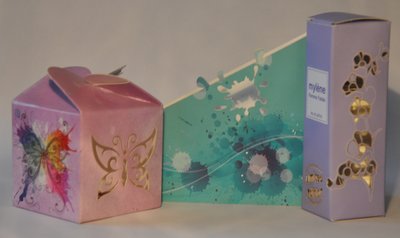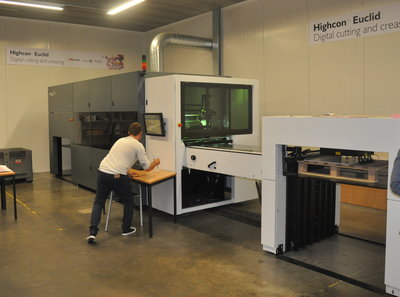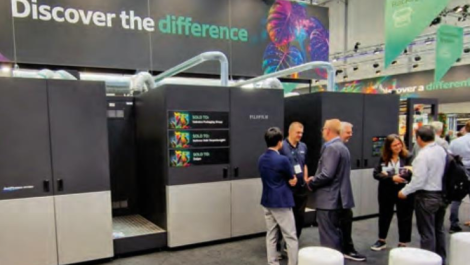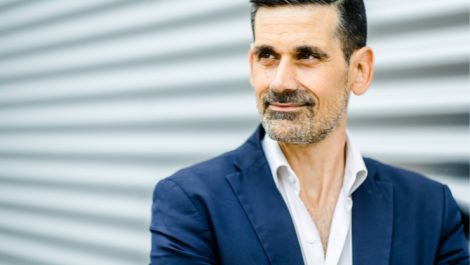Highcon Euclid at Antilope Cardboard in Lier, Belgium
The first installation of the Highcon Euclid digital cutting and creasing system in Europe is at Antilope Cardboard, in Belgium. The machine was commissioned in the summer and Sean Smyth went along to see how the company is fairing with this innovative new technology.
Part of the €30 million turnover Antilope Group based in Lier, in Belgium, Antilope Cardboard is an innovator with a good track record in adopting new technology. It claims to have been the earliest adopter of colour digital printing in the world with the first Agfa Chromapress, in 1993. Other innovations include the direct imaging Karat machine, linking pre-press to press with CIP3 files back in 1997 and CTP in 2002.
The company understands the potential difficulties of being an early adopter, but also understands how to exploit the opportunities. Chief executive officer, Marc Binnemans, explained that there is a strategy of early adoption to bring new products, services and technologies to its customers to obtain a temporary monopoly position and exploit the period of no competition. This allows Antilope to make contact with world players, to build up knowledge and develop a leading market position that attracts new customers to see what it can offer. This strategy has successfully enabled the company to differentiate itself from much of the competition.
Natural extension
The company has digital printing capabilities, and broadened its market from commercial print into packaging in 2006 when the cartonboard division was set up, printing and finishing high quality cartons and sleeves in low volumes. Today cartons account for some 27% of the group turnover of €30 million, in a separate division. Part of the reason for the separation is the different approach to customers, usually the marketing function for commercial print and to specialist buyers for cartons and packaging.
Antilope has a range of web to print and online portals handling and automating pre-press and artwork preparation and presentation. Digital printing has grown and the company saw digital finishing as a natural extension to improve both the functionality of the carton, and the response and service levels to customers. The Euclid machine was installed with few issues into a plush new room which is used to promote the company to customers.
The cutting and creasing system takes printed sheets and finishes them in a two-stage process. The infeed positions the sheet against a side-lay and it then passes into the finishing line, held by a vacuum belt system.
The creasing is handled by producing a unique creasing die, the DART (digital adhesive rule technology), which is a tough photopolymer extruded onto a foil mounted on a creasing cylinder in the first part of the processing machine. The extruding head moves across the cylinder which advances to write the creasing pattern. The material is polymerised using UV radiation, and preparing the DART takes a few minutes while the writing time depends on the complexity of the creasing shape. The board passes under the cylinder in register to crease accurately, then under the laser cutting system that cuts the required shape with small cut outs removed. Sheet throughput depends on the complexity of the cut out; long laser paths reduce the speed with the machine determining the optimal speed.
No barriers
It is always interesting to see new technology in operation at an early adopter. Some of the cartons showed signs of burning at the cut edge. Marc Binnemans explained that this depends on the type of board used and that it is explained to the customer prior to production and it has not proved to be an issue with most customers.
Digital cutting and creasing certainly offers totally new opportunities. Highcon suggests it might change the rules of the game, while Antilope has found several advantages as it gets to grip with the capabilities. It takes away a barrier for creativity, namely the need for a die, and makes it easier to deal with complex shapes. There are also opportunities to add value through security versioning using variable laser marking. Full digital production can reduce turnaround times and improve flexibility.
While Antilope is firmly focused on adding to its customer offering, there are also operational efficiencies. The ability to combine different layouts on the same sheet means printing can be made more efficient with fewer press set ups, while mixing jobs means that board waste can be reduced. Die costs are eliminated and there are no on-going storage costs. It allows short runs to be produced more effectively (while the system is guaranteed for 10,000, sheet runs of 50,000 have been produced on a single DART).
Impressively the company wants to use the technology to add to its customer offering. It is looking to add value and definitely not concentrate on cost reductions, die savings, etc. Several new customers have made contact when they heard that the first Highcon was in operation. Antilope is a good example of using new technology to increase profits, while advertising the potential by winning industry awards.
Aviv Ratzman, CEO, Highcon, ‘Needless to say, we are gratified to see the first commercial installation of the Highcon Euclid at Antilope. We look forward to seeing some amazing results from the company’s forward thinking packaging team together with the creative capabilities of the Highcon Euclid.’
———————————————————————
Award winner
Antilope won the Pro Carton ECMA (European Carton Manufacturers Association) Award in the beauty & cosmetics category for the ‘Femme Fatale’ perfume produced for Mylène Cosmetics. Printed on Sappi’s Algro Design bright white cartonboard, the box was designed to exploit the capabilities of the Euclid, with intricate patterns cut out, even across a crease at the edge of the small carton.

The pack stood out as being different from other perfumes, ‘radiating both simplicity and refinement’ which according to Mylène is a key requirement in order to appeal to target customers with functionality and femininity going hand in hand.
‘Mylène wanted the current Femme Fatale packaging to be upgraded. For a state-of-the-art company such as Mylène it is vital for its cosmetic products to stand out from all the rest. Hence the crucial need for ‘out of the box’ thinking,’ said Antilope manager, Linda Corremans.
———————————————————————-






